Küppersbusch ITE 239-0 Operating Instructions Manual
- Category
- Fridge-freezers
- Type
- Operating Instructions Manual

2223 383-71
Gebrauchs- und Montageanleitung
Instructions for installation and use
Instructions de montage et d’emploi
Wichtig: Unbedingt lesen und aufbewahren!
Important: Read these instructions carefully and then store them in a safe place
Important: Lire attentivement et ranger soigneusemnt ce mode d’emploi
Einbau- u. integrierbare Gefriergerät
Building-in and integrated Freezers
Congélateurs encastrables, intégrables
Modell: ITE 239-0
p.: 8-14 15-22
GB
F
KÜPPERSBUSCH HAUSGERÄTE AG
Postfach 10 01 32, D-45801 Gelsenkirchen, Küppersbuschstr. 16, D-45883 Gelsenkirchen
Telefon: (02 09) 4 01-0, Telefax: (02 09) 4 01-3 03
www.kueppersbusch.de
Küppersbusch Ges. m. b. H.
Eitnergasse 13, 1231 Wien, Telefon: 01 / 8 66 80-0, Telefax: 01 / 8 66 80 72
www.kueppersbusch.at · e-Mail: [email protected]
Downloaded from Fridge-Manual.com Manuals

8
WARNINGS
It is most important that this instruction book should be retained with the appliance for future
reference. Should the appliance be sold or transferred to another owner, or should you move house
and leave the appliance, always ensure that the book is supplied with the appliance in order that the
new owner can be acquainted with the functioning of the appliance and the relevant warnings.
If this appliance featuring magnetic door seals is to replace an older appliance having a spring lock
(latch) on the door or lid, be sure to make that spring lock unusable before you discard the old
appliance. This will prevent it from becoming a death-trap for a child.
This must be done before the appliance is built intoThese warnings are provided in the interest of
safety.You must read them carefully before installing or using the appliance.
General Safety
• This appliance is designed to be operated by
adults. Children should not be allowed to tamper
with the controls or play with the product.
• It is dangerous to alter the specifications or
modify this product in any way.
• Care must be taken to ensure that the appliance
does not stand on the electrical supply cable.
Important: if the supply cord is damaged, it must
be replaced by a special cord or assembly availa-
ble from the manufacturer or its service agent.
• Before any cleaning or maintenance work is carried
out, be sure to switch off and unplug the appliance.
• This appliance is heavy. Care should be taken
when moving it
• Ice lollies can cause frost burns if consumed
straight from the appliance.
• Take utmost care when handling your
appliance so as not to cause any damages to
the cooling unit with consequent possible
fluid leakages.
• The appliance must not be located close to
radiators or gas cookers.
• Avoid prolonged exposure of the appliance to
direct sunlight.
• There must be adequate ventilation round the
back of the appliance and any damage to the
refrigerant circuit must be avoided.
• For freezers only (except built-in models): an
ideal location is the cellar or basement.
• Do not use other electrical appliances (such
as ice cream makers) inside of refrigerating
appliances, unless they are approved for this
purpose by the manufacturer.
Service/Repair
• Any electrical work required to install this
appliance should be carried out by a qualified
electrician or competent person
• This product should be serviced by an authorized
Service Centre, and only genuine spare parts
should be used.
• Under no circumstances should you attempt to
repair the appliance yourself. Repairs carried out
by inexperienced persons may cause injury or
more serious malfunctioning. Refer to your local
Service Centre, and always
• This appliance contains hydrocarbons in its
cooling unit; maintenance and recharging must
therefore only be carried out by authorized
technicians.
Use
• The domestic refrigerators and freezers are
designed to be used specifically for the storage
of edible foodstuffs only.
• Best performance is obtained with ambient
temperature between +18°C and +43°C (class T);
+18°C and +38°C (class ST); +16°C and +32°C
(class N); +10°C and +32°C (class SN). The
class of your appliance is shown on its rating
plate.
Warning: when the ambient temperature is not
included within the range indicated for the class
of this appliance, the following instructions must
be observed: when the ambient temperature
drops below the minimum level, the storage
temperature in the freezer compartment cannot
be guaranteed; therefore it is advisable to use the
food stored as soon as possible.
• Frozen food must not be re-frozen once it has
been thawed out.
• Manufacturers’ storage recommendations should
be strictly adhered to. Refer to relevant
instructions.
• The inner lining of the appliance consists of
channels through which the refrigerant passes. If
these should be punctured this would damage the
appliance beyond repair and cause food loss. DO
NOT USE SHARP INSTRUMENTS to scrape off
frost or ice. Frost may be removed by using the
scraper provided. Under no circumstances should
solid ice be forced off the liner. Solid ice should be
allowed to thaw when defrosting the appliance.
17
SOMMAIRE
Avertissements et conseils importants . . . . . . . . . . . . . . . . . . . . . . . . . . . . . . . . . . . . . . . . . . . . . .15
Renseignements pour l’élimination des matériaux d’emballage . . . . . . . . . . . . . . . . . . . . . . . . . .16
Utilisation - Nettoyage - Tableau de commande . . . . . . . . . . . . . . . . . . . . . . . . . . . . . . . . . . . . . . . . .17
- Mise en service - Réglage de la température . . . . . . . . . . . . . . . . . . . . . . . . . . . . . . . . . . . . . . . . . . .18
Utilisation - Congélation rapide - Voyant d’alarme - Glaçons - Conservation des produits surgelés . . . . .
Décongélation - Congélation - Conseils - Conseils pour la congélation . . . . . . . . . . . . . . . . . . . . . . . .19
Conseils - Conseils pour la surgélation - Entretien - Nettoyage - Arrêt prolongé - Dégivrage . . . . . .20
Anomalie de fonctionnement - Installation - Emplacement - Branchement électrique . . . . . . . . .21
Installation - Dimension de la niche . . . . . . . . . . . . . . . . . . . . . . . . . . . . . . . . . . . . . . . . . . . . . . . . . .22
Nettoyage
L’appareil étant convenablement installé, nous vous
conseillons de le nettoyer soigneusement avec de
l’eau tiède savonneuse, pour enlever l’odeur
caractéristique de «neuf».
UTILISATION
Tableau de commande
N’utilisez pas de produits abrasifs, de
poudre à récurer ni d’éponge métallique.
-
+
AC
D
E
FGH
B
I
A. Témoin ALLUMÉ/ÉTEINT
B Touche ALLUMÉ/ÉTEINT
C. Touche de réglage de la température
(augmenter)
D. Indicateur de température du congélateur
E. Touche de réglage de la température (abaisser)
F. Témoin fonction Frostmatic
G. Touche fonction Frostmatic
H. Témoin d'alarme
I. Touche de désactivation alarme
A.Témoin ALLUMÉ/ÉTEINT
B.Touche ALLUMÉ/ÉTEINT
ALLUMÉ: appuyer sur la touche (B), le témoin (A)
doit s'allumer.
ÉTEINT: maintenir enfoncée la touche (B) jusqu'à ce
que le témoin (A) et l'indicateur de
température s'éteignent.
C - D. Touches de réglage de la
température
La température peut être réglée sur une plage
comprise entre -15°C et -24°C.
En appuyant sur la touche (C ou E), la température
programmée clignote sur l'indicateur (D). La
modification du réglage de température est possible
uniquement alors que l'indicateur clignote. Pour
obtenir une température plus élevée, appuyer sur la
touche (C), pour obtenir une température plus basse
appuyer sur la touche (E). L'indicateur affiche
pendant quelques secondes la température
Downloaded from Fridge-Manual.com Manuals

9
Cleaning the interior
Before using the appliance for the first time, wash
the interior and all internal accessories with luke-
warm water and some neutral soap so as to remove
the typical smell of a brand-new product, then dry
thoroughly.
USE
Do not use detergents or abrasive
powders, as these will damage the finish.
CONTENTS
Warnings . . . . . . . . . . . . . . . . . . . . . . . . . . . . . . . . . . . . . . . . . . . . . . . . . . . . . . . . . . . . . . . . . . . . . . . . . . .8
Use - Cleaning the interior . . . . . . . . . . . . . . . . . . . . . . . . . . . . . . . . . . . . . . . . . . . . . . . . . . . . . . . . . . . . . . . . .9
Use - Control Panel . . . . . . . . . . . . . . . . . . . . . . . . . . . . . . . . . . . . . . . . . . . . . . . . . . . . . . . . . . . . . . . . . . . . . . . .10
Operation - Freezing fresh food - Use - Storage of frozen food - Thawing - Ice-cube production . . . . . . . . . . . . .11
Hints - Hints for freezing - Hints for storage of frozen food . . . . . . . . . . . . . . . . . . . . . . . . . . . . . . . . . . . . . .12
Maintenance-Periods of no operation-Periodic cleaning-Defrosting-Customer service and spare parts 13
Installation - Location - Electrical connection - Dimensions of housing . . . . . . . . . . . . . . . . . . . . . . . . . . .14
• Do not place carbonated or fizzy drinks in the
freezer as it creates pressure on the container,
which may cause it to explode, resulting in
damage to the appliance.
Installation
• During normal operation, the condenser and
compressor at the back of the appliance heat up
considerably. For safety reasons, minimum
ventilation must be as shown in the relevant
Figure.
Attention: keep ventilation openings clear of
obstruction.
• If the appliance is transported horizontally, it is
possible that the oil contained in the compressor
flows in the refrigerant circuit. It is advisable to
wait at least two hours before connecting the
appliance to allow the oil to flow back in the
compressor.
• There are working parts in this product which
heat up. Always ensure that there is adequate
ventilation as a failure to do this will result in
component failure and possible food loss. See
installation instructions.
• Parts which heat up should not be exposed.
Wherever possible the back of the product should
be against a wall.
• If the appliance has been transported
horizontally, it is possible that the oil contained in
the compressor ílows in the refrigerant circuit. It
is advisable to wait at least two hours before
connecting the appliance to allow tl¦e oil to flow
back in the compressor.
Environment Protection
This appliance does not contain gasses which
could damage the ozone layer, in either its
refrigerant circuit or insulation materials.The
appliance shall not be discarded together with
the urban refuse and rubbish. Avoid damaging
the cooling unit, especially at the rear near the
heat exchanger. Information on your local
disposal sites may be obtained from municipal
authorities.The materials used on this appliance
marked by the symbol are recyclable.
Disposal of old Appliances
The symbol on the product or on its packaging
indicates that this product may not be treated as
household waste. Instead it shall be handed over to
the applicable collection point for the recycling of
electrical and electronic equipment. By ensuring this
product is disposed of correctly, you will help prevent
potential negative consequences for the
environment and human health, which could
otherwise be caused by inappropriate waste
handling of this product. For more detailed
information about recycling of this product, please
contact your local city office, your household waste
disposal service or the shop where you purchased
the product.
16
RENSEIGNEMENTS POUR L’ÉLIMINATION
DES MATÉRIAUX D’EMBALLAGE
Tous les matériaux et les accessoires utilisés pour
emballer nos grands électroménagers, sauf ceux qui
sont en bois recyclables et peuvent donc se
récupérer. Voici ce que nous vous conseillons:
• Déposez les emballages en papier, en carton et
en carton ondulé aux endroits prévus pour le
ramassage de ce genre de matériau.
• Mettez les piéces en plastique dans les
conteneurs prévus à cet effet. Si ce genre de
conteneurs n’existent pas encore à l’endroit où
vous habitez, vous pouvez éliminer les matériaux
en question en les mettant dans les ordures
ménagères.
Pour les emballages de matières plastiques
recyclables, par example:
Les exemples reportent les symboles suivants:
PE pour polyéthylène** 02 = ^ PE-HD; 04 = ^ PE-LD
PP pour le polypropylène
PS pour le polystyrène
PIÉCES EN MATIÉRE PLASTIQUE
Pour faciliter l’élimination et :ou le recyclage des
matériaux, la plupart des pièces de l’appareil ont
une contremarque qui en facilite l’indentification.
PS
SAN
ABS
02**
PE
05
PP
06
PS
ambiantes indiquées par la classe climatique
d’appartenance de ce produit, il est obligatoire de
respecter les indications suivantes: lorsque la
température ambiante descend sous la valeur
minimum, la température de conservation du
compartiment congélateur peut ne pas être
garantie; il est donc conseillé de consommer les
produits que ce dernier contient au plus vite.
• Un produit décongelé ne doit jamais être
recongelé.
• Suivez les indications du fabricant pour la
conservation et/ou congélation des aliments.
• Dans tous les appareils de réfrigération et
congélation il y a des surfaces qui se couvrent de
givre. Suivant le modèle, ce givre peut être
éliminé automatiquement (dégivrage
automatique) ou bien manuellement.
• N’essayez jamais d’enlever le givre avec un objet
métallique, vous risqueriez d’endommager
irréparablement l’évaporateur. N’employez pour
cela que la spatule en plastique livrée avec
l’appareil.
• De même, ne décollez jamais les bacs à glace
avec un couteau ou tout autre objet tranchant.
• Ne placez ni bouteilles ni boîtes de boissons
gazeuses dans le congélateur/compartiment à
basse température, elles pourraient exploser.
Protection de l’environnement
Cet appareil ne contient pas, dans son circuit de
réfrigérant et ses matières isolantes, de gaz
réfrigérant nocifs à la couche d’ozone. L’appareil
ne doit pas être mis au rebut avec les ordures
urbaines et la ferraille. Il faut éviter d’endom-
mager le circuit de réfrigérant, surtout à l’arrière
de l’appareil, près de l’énchangeur thermique.
Vous pouvez vous renseigner sur les centres de
ramassage auprès de votre bureau municipal.
Les matériaux utilisés dans cet appareil
identifiés par le symbole sont recyclables.
Elimination des vieux appareils
Le symbole sur le produit ou son emballage
indique que ce produit ne peut être traité comme
déchet ménager. Il doit plutôt être remis au point de
ramassage concerné, se chargeant du recyclage du
matériel électrique et électronique. En vous assurant
que ce produit est éliminé correctement, vous
favorisez la prévention des conséquences négatives
pour l’environnement et la santé humaine qui, sinon,
seraient le résultat d’un traitement inapproprié des
déchets de ce produit. Pour obtenir plus de détails
sur le recyclage de ce produit, veuillez prendre
contact avec le bureau municipal de votre région,
votre service d’élimination des déchets ménagers ou
le magasin où vous avez acheté le produit.
Downloaded from Fridge-Manual.com Manuals

10
Control Panel
-
+
AC
D
E
FGH
B
I
A. On/OFF light
B ON/OFF button
C Temperature setting button (warmest)
D Temperature indicator
E Temperature setting button (coldest)
F Super frost light
G Super frost button
H Alarm reset light
I Alarm reset button
A. Light ON/OFF
B. Button ON/OFF
ON: Press the button (B). The pilot light (A)
switches on.
OFF: Keep press the button (B) until the pilot light (A)
and the temperautre indicator switched off.
C - E Temperature setting buttons
The temperature can be adjusted between -15°C
and -24°C.
By pressing the button (C or E), the current
temperature setting flashes on the indicator. It is
possible to modify the setting temperature only with
flashed indicator. To set a warmer temperature,
press button (C). To set a colder temperature, press
button (E). The indicator display the newly selected
temperature for a few seconds and then shows
again the inside compartment temperature.
The newly selected-temperature must be reached
after 24 hours.
Attention!
During the stability period by the first starting the
temperature displayed can not correspond to the
setting temperature. During this time it is possible
that the temperature displayed is lower than the
setting temperature.
D. Temperature indicator
During normal functioning the indicator shows the
warmest temperature inside the freezer.
Difference until 5°C inside the compartment are
quite normal.
Attention!
Difference between the temperature displayed and
temperature setting is normal. Especially when:
- a new setting has recently been selected
- the door has been left open for a long time
- warm food has been placed in the compartment
F. Super frost pilot light
G. Super frost button
To freeze fresh foods, the “Super frost” function must
be actived. Press the super frost button (G).The
relevant pilot light (F) switches on
The function can be deactived at any time, by
pressing the button (G), otherwise it automatically
switched off. With deactived functionth pilot light (F)
switches off.
15
AVERTISSEMENTS ET CONSEILS IMPORTANTS
Il est très important que cette notice d’utilisation soit gardée avec l’appareil pour toute future
consultation. Si cet appareil devait être vendu ou transféré à une autre personne, assurez-vous que la
notice d’utilisation suive l’appareil, de façon à ce que le nouvel utilisateur puisse être informé du
fonctionnement de celui-ci et des avertissements relatifs.Si cet appareil, muni de fermeture
magnétique, doit être employé pour en remplacer un autre avec une fermeture à ressort, nous vous
conseillons de rendre celle-ci inutilisable avant de mettre l’ancien appareil de côté. Cela dans le but
d’éviter que des enfants puissent s’y renfermer et se mettre ainsi en danger de mort.
Ces avertissements sont donnés pour votre sûreté et pour celle d’autrui.Nous vous prions donc de
bien vouloir les lire attentivement avant d’installer et d’utiliser l’appareil.
Sûreté
• Cet appareil a été conçu pour être utilisé par des
adultes. Veillez donc à ce que les enfants n’y
touchent pas ou qu’ils ne l’utilisent pas comme
un jouet.
• Débranchez toujours la prise de courant avant de
procéder au nettoyage intérieur et extérieur de
l’appareil et au remplacement de la lampe
d’éclairage (pour les appareils qui en sont
équipés).
• Ne consommez pas certains produits tels que les
bâtonnets glacés dès leur sortie de l’appareil; la
température très basse à laquelle ils se trouvent
peut provoquer des brûlures.
• Cet appareil est lourd. Faites attention lors du
déplacement.
• Faites très attention lorsque vous déplacez
l’appareil afin de ne pas endommager des
parties du circuit de réfrigérant et ainsi
d’éviter le risque de fuites de liquide.
• L’appareil ne doit pas être situé à proximité de
radiateurs ou cuisinières à gaz.
• Evitez une exposition prolongée de l’appareil
aux rayons solaires.
• II doit y avoir une circulation d’air suffisante à
la partie arrière de l’appareil et il faut éviter
tout endommagement du circuit réfrigérant.
• Seulement pour congélateurs (sauf modèles
encastrés): un emplacement optimal est la
cave.
• Ne pas mettre d’instruments électriques à
l’intérieur de l’appareil (sorbetière, par
exemple), à moins que le fabricant ne les ait
approuvés.
Service/Réparation
• Une éventuelle modification à l’installation
électrique de votre maison qui devait être néces-
saire pour l’installation de l’appareil ne devra être
effectuée que par du personnel qualifié.
• Il est dangereux de modifier ou d’essayer de
modifier les caractéristiques de cet appareil.
• Cet appareil contient des hydrocarbures dans
son circuit de réfrigérant; I’entretien et la
recharge ne doivent done être effectués que par
du personnel autorisé.
• En cas de panne, n’essayez pas de réparer
l’appareil vous-même. Les réparations effectuées
par du personnel non qualifié peuvent provoquer
des dommages. Contactez le Service Après-
Vente le plus proche et n’exigez que des pièces
détachées originales.
Installation
• Assurez-vous, après avoir installé l’appareil, que
celuici ne repose pas sur le câble d’alimentation.
Important: en cas de dommage au câble
d’alimentation, il faudra le remplacer avec un
câble spécial ou un ensemble disponibles chez le
fabricant ou le service technique aprés-vente.
• L’appareil se réchauffe sensibilment au niveau du
condenseur et du compresseur. Veillez à ce que
l’air circule librement tout autour de l’appareil.
Une ventilation insuffisante entraìnerait un
mauvais fonctionnement et des dommages sur
l’appareil. Suivez les instructions données pour
l’installation.
• A cause du système de transport, l’huile
contenue dans le compresseur pourrait s’écouler
dans le circuit réfrigérant. Attendez 2 heures au
moins avant de brancher l’appareil pour
permettre à l’huile de refluer dans le
compresseur.
Utilisation
• Les réfrigérateurs et/ou congélateurs ménagers
sont destinés uniquement à la conservation et/ou
congélation des aliments et des boissons.
• Pour le bon fonctionnement de votre appareil, la
température ambiante du local doit être comprise
entre +18°C et +43°C (Classe T); +18°C et
+38°C (Classe ST); +16°C et +32°C (Classe N);
+10°C et +32°C (Classe SN); La classe
d’appartenance est indiquée sur la plaque
signalétique.
ATTENTION: En dehors des températures
Downloaded from Fridge-Manual.com Manuals

11
O Alarm reset light
P Alarm reset button
In the event of an abnormal temperature rise inside
the freezer (e.g. power cut) warning light (O) will
start to flash and a buzzer will sound.
After the temperature has returned to normal, the
warning light (O) will continue to flash, although the
buzzer has stopped.
When the alarm button (P) is pressed, the warmest
temperature reached in the compartment flashes on
the indicator (K).
If the power has been off for a long time, frozen food
should be consumed as quickly as possible, or
cooked and then re-frozen.
Operation
Insert the plug in the power socket. Press the button
ON/OFF (B). The freezer is switched on.
The freezer is pre-set to run at -18°C. this
temperature will be reached in a few hours.
As soon as the appliance is switched on the
temperature indicator (D) shows the current
temperature inside the freezer, the alarm reset light
(H) flashes and a buzzer sounds. Press the alarm
reset button (I). The buzzer stops and the alarm light
(H) continues to flash until the setting temperature is
reached.
Freezing fresh food
To freeze fresh food, press the Super Frost button
(G).
Place the food to be frozen in the upper
compartment. The maximum quantity of food which
can be frozen in 24 hrs. is shown on the rating plate;
Warning!
When use the “Super Frost” function:
about 6 hrs
before
about 24 hrs
before
not needed
not needed
Introducing small quantities of fresh food
(about 5 kg)
Introducing the maximum quantity of food
(see rating plate)
Introducing frozen food
Introducing small quantities of fresh food
daily 2 kg maximum
Freezing fresh food
The 4-star compartment is suitable for long term
storage of commercially frozen food and for freezing
fresh food.
To freeze fresh foods allow it to run on the fast
freeze setting for at least 24 hours before loading
food.
Place the food to be frozen in the compartments as
shown in figure.
10 kg
10 kg
Storage of frozen food
When first starting-up or after a period out of use,
before putting the products in the compartment let
the appliance run for at least two hours on the fast
freeze setting, then turn the thermostat knob to the
normal operating position.
Important
If there is a power failure when food is in the
freezer, do not open the door of the freezer
compartment. The frozen food will not be
affected if the power cut is of short duration (up
to 6-8 hours) and the freezer compartment is full,
otherwise, it is recommended that the food
should be used within a short time (a
temperature increase of the frozen food shortens
its safe storage period).
Thawing
Deep-frozen or frozen food, prior to being used, can
be thawed in the refrigerator compartment or at
room temperature, depending on the time available
for this operation.
Small pieces may even be cooked still frozen, directly
from the freezer: in this case, cooking will take longer.
Ice-cube production
This appliance is equipped with one or more trays
for the production of ice-cubes. Fill these trays with
water, then put them in the freezer compartment.
Do not use metallic instruments to remove the
trays from the freezer.
14
PR01
540
50
B
T
H
50 mm
min.
200 cm
2
200 cm
2
min.
D567
Dimensions of housing
Height 1780 mm
Depth 550 mm
Width 560 mm
For safety reasons, minimum ventilation must be as
shown in Fig.
Attention: keep ventilation openings clear of
obstruction.
It is necessary that the niche is provided with a
conduct of ventilation having the following
dimensions:
Depth 50 mm
Width 540 mm
For installation see the instructions enclosed.
ATTENTION!
It must be possible to disconnect the appliance from
the mains power supply; the plug must therefore be
easily accessible after installation.
Electrical connection
Before plugging in, ensure that the voltage and
frequency shown on the serial number plate
correspond to your domestic power supply. Voltage
can vary by ±6% of the rated voltage.
For operation with different voltages, a suitably sized
auto-transformer must be used.
The appliance must be earthed.
The power supply cable plug is provided with a
contact for this purpose.
If the domestic power supply socket is not earthed,
connect the appliance to a separate earth in
compliance with current regulations, consulting a
specialist technician.
The Manufacturer declines all responsibility if
the above safety precautions are not observed.
This appliance complies with the following
E.E.C. Directives:
- 87/308 EEC of 2/6/87 relative to radio interference
suppression.
- 73/23 EEC of 19.2.73 (Low Voltage Directive) and
subsequent modifications;
- 89/336 EEC of 3.5.89 (Electromagnetic
Compatibility Directive) and subsequent
modifications.
INSTALLATION
Location
The appliance should be installed well away from
sources of heat such as radiators, boilers, direct
sunlight etc.
Downloaded from Fridge-Manual.com Manuals

12
Hints for storage of frozen food
To obtain the best performance from this appliance,
you should:
• make sure that the commercially frozen
foodstuffs were adequately stored by the retailer;
• be sure that frozen foodstuffs are transferred
from the foodstore to the freezer in the shortest
possible time;
• not open the door frequently or leave it open
longer than absolutely necessary.
• Once defrosted, food deteriorates rapidly and
cannot be refrozen.
• Do not exceed the storage period indicated by
the food manufacturer.
Hints for freezing
To help you make the most of the freezing process,
here are some important hints:
• the maximum quantity of food which can be
frozen in 24 hrs. is shown on the rating plate;
• the freezing process takes 24 hours. No further
food to be frozen should be added during this
period;
• only freeze top quality, fresh and thoroughly
cleaned, foodstuffs;
• prepare food in small portions to enable it to be
rapidly and completely frozen and to make it
possible subsequently to thaw only the quantity
required;
• wrap up the food in aluminium foil or polythene
and make sure that the packages are airtight;
• do not allow fresh, unfrozen food to touch food
which is already frozen, thus avoiding a rise in
temperature of the latter;
• lean foods store better and longer than fatty
ones; salt reduces the storage life of food;
• water ices, if consumed immediately after
removal from the freezer compartment, can
possibly cause the skin to be freeze burnt;
• it is advisable to show the freezing-in date on
each individual pack to enable you to keep tab of
the storage time;
• on the inner door or special card (if supplied) you
will find sketches of various animals and food
types together with the recommended storage
time (in months) from the time of freezing;
• do not put carbonated liquids (fizzy drinks,
etc.) in the freezer compartment as they may
burst.
HINTS
13
Periods of non-operation
When the appliance is not in use for long periods,
take the following precautions:
remove the plug from the wall socket;
remove all food;
defrost and clean the interior and all accessories;
leave the door ajar to allow air to circulate to prevent
unpleasant smells.
Defrosting
The freezer compartment of this model, on the other
hand, is a " no frost" type. This means that there is
no buildup of frost when it is in operation, neither on
the internal walls nor on the foods.
The absence of frost is due to the continuous
circulation of cold air inside the compartment, driven
by an automatically controlled fan.
CUSTOMER SERVICE AND SPARE PARTS
If the appliance is not functioning properly, check
that:
• the plug is firmly in the wall socket and the mains
power switch is on;
• there is an electricity supply (find out by plugging
in another appliance);
• If your appliance is still not working properly after
making the above checks, contact the nearest
service centre.
To obtain fast service, it is essential that when you
apply for it you specify the model and serial number
of your appliance which can be found on the
guarantee certificate or on the rating plate located
inside the appliance, on the bottom left-hand side.
Periodic cleaning
Clean the inside with warm water and bicarbonate of
soda. Rinse and dry thoroughly.
Clean the condenser (black grill) and the
compressor at the back of the appliance with a
brush or a vacuum cleaner. This operstion will
improve the performance of the appliance and save
electricity consumption.
Unplug the appliance before carrying out
any maintenance operation.
MAINTENANCE
Warning
This appliance contains hydrocarbons in its cooling
unit; maintenance and recharging must therefore
only be carried out by authorized technicians.
Downloaded from Fridge-Manual.com Manuals
-
 1
1
-
 2
2
-
 3
3
-
 4
4
-
 5
5
-
 6
6
Küppersbusch ITE 239-0 Operating Instructions Manual
- Category
- Fridge-freezers
- Type
- Operating Instructions Manual
Ask a question and I''ll find the answer in the document
Finding information in a document is now easier with AI
in other languages
- français: Küppersbusch ITE 239-0
Related papers
-
Küppersbusch ITE 139-0 Operating Instructions Manual
-
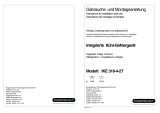 Küppersbusch IKE318-4-2T User manual
Küppersbusch IKE318-4-2T User manual
-
 Küppersbusch IKE318-4-2T User manual
Küppersbusch IKE318-4-2T User manual
-
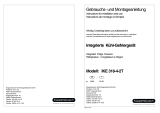 Küppersbusch IKE318-4-2 User manual
Küppersbusch IKE318-4-2 User manual
-
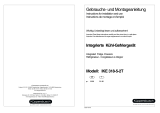 Küppersbusch IKE318-5-2 User manual
Küppersbusch IKE318-5-2 User manual
-
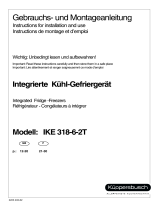 Küppersbusch IKE318-62T User manual
Küppersbusch IKE318-62T User manual
-
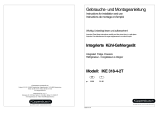 Küppersbusch IKE318-4-2 User manual
Küppersbusch IKE318-4-2 User manual
-
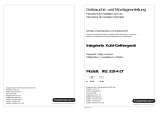 Küppersbusch IKE318-4-2T User manual
Küppersbusch IKE318-4-2T User manual
-
Küppersbusch KE680-1-2T User manual
-
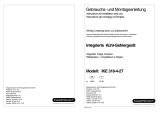 Küppersbusch IKE318-4-2T User manual
Küppersbusch IKE318-4-2T User manual
Other documents
-
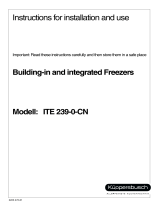 Küppersbusch ITE239-0CN User manual
Küppersbusch ITE239-0CN User manual
-
Electrolux EUF2330 User manual
-
Electrolux IK2905LI User manual
-
Aeg-Electrolux IK2905RE Owner's manual
-
Electrolux IK2905LI User manual
-
Electrolux IK270010ZL User manual
-
Electrolux IK2700ZRE User manual
-
AEG Electrolux Santo C 7 18 40-6i User manual
-
Electrolux ENN28600 User manual
-
Haier HBM-686XNFN User manual














